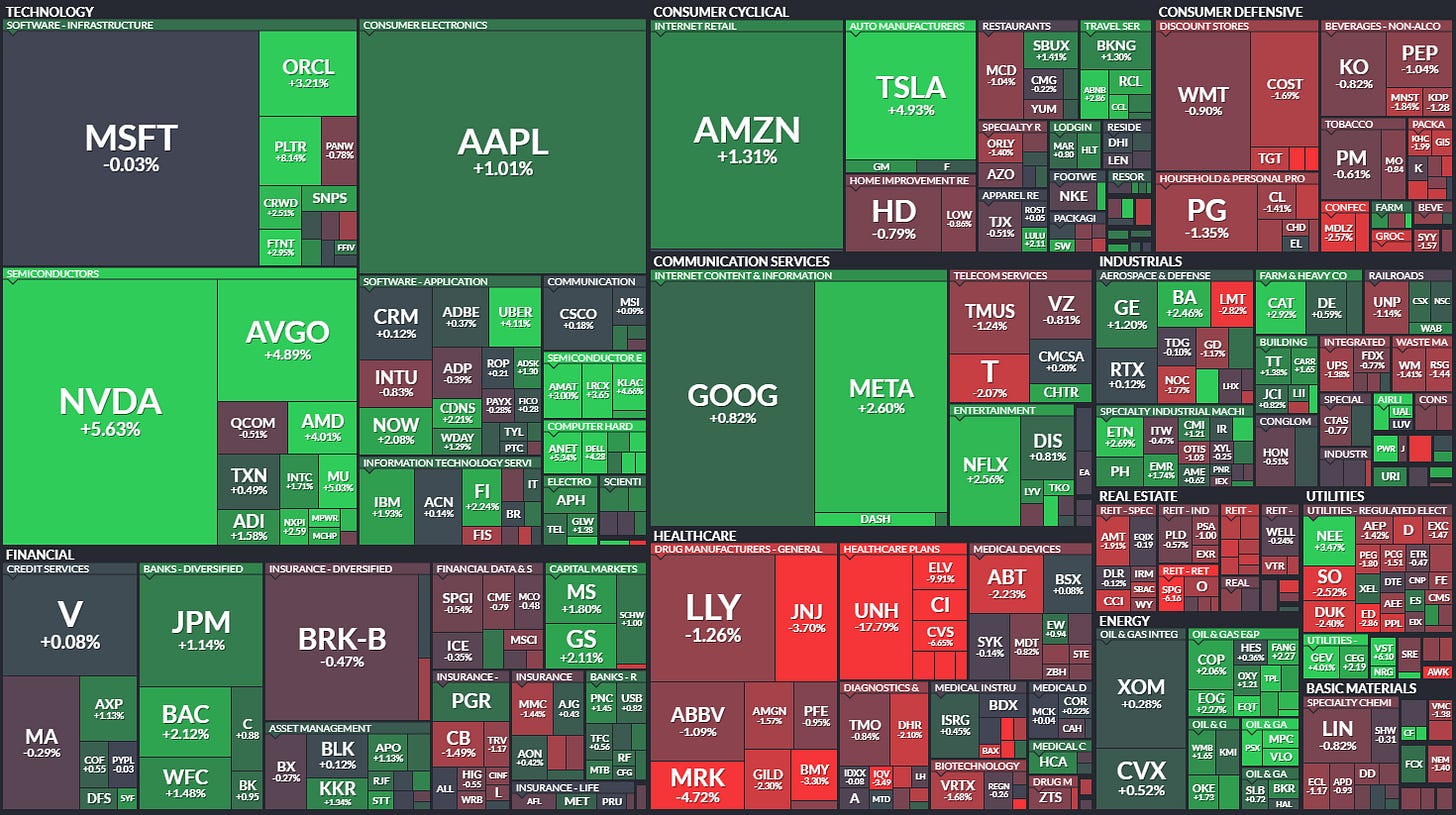On Tuesday, U.S. equity markets continued their rebound following January and February pullbacks: the S&P 500 climbed 0.7%, and the Nasdaq Composite rose 1.6%, reinforcing the positive momentum of the prior week. These moves signal that investors are gradually returning to growth stocks—especially after the release of moderate inflation data and favorable news out of the technology sector.
Growth Leaders
NVIDIA once again stole the spotlight, adding 5.6% to its market value. Investors continue to bank on breakthroughs in artificial intelligence and strong demand for its GPUs.
Advanced Micro Devices (AMD) rallied nearly 4% after announcing a partnership with Saudi AI firm Humain to supply semiconductors for its AI data center.
Other chipmakers—including Micron Technology, Broadcom, and KLA Corp—also jumped between 4% and 6%, underscoring a broad-based rally in the semiconductor sector.
Coinbase surged over 23% after receiving official confirmation of its inclusion in the S&P 500 effective May 19.
Super Micro Computer rallied 15% following an upgrade and $41 price target from Raymond James.
Palantir climbed 8% after CTBC Securities initiated coverage with a “buy” rating and a $142.30 target.
Constraining Factors
Not every sector joined the rally:
The Dow Jones Industrial Average was essentially flat, weighed down by a 17.8% plunge in UnitedHealth after its CEO’s sudden resignation and the withdrawal of its 2025 guidance due to rising medical costs. That drop triggered a sell‑off among health insurers—Humana, Elevance Health, CVS and Centene all fell between 6% and 9%.
Defensive consumer staples underperformed as investors rotated into higher‑beta tech names: Mondelez, Hershey, Conagra and others lost 1–3%.
Macroeconomic Background
Several key macro drivers underpinned the recent rally:
April’s headline CPI climbed 2.3% year‑over‑year (below the 2.4% forecast), and core CPI rose 2.8% (in line with estimates)—the weakest annual gains in four years. This helped reassure markets that the Fed need not tighten policy further.
The partial rollback of Biden‑era export controls on AI chips, combined with plans from the Trump administration to revisit export rules, eased uncertainty for tech firms. JPMorgan Chase raised its 2025 U.S. GDP forecast to 0.6%, noting that the “trade détente” significantly lowers recession risks.
Yields on 10‑year U.S. Treasuries settled around 4.50%, reflecting both reduced risk appetite and expectations for steady Fed policy.
Corporate Earnings
The Q1 reporting season is wrapping up on a strong note:
Over 75% of S&P 500 companies have reported, and 77% have beaten consensus earnings estimates—the highest percentage since Q2 2024.
Average year‑over‑year earnings growth stands at +13.1%, compared with +6.6% expected before reporting began.
Despite a mixed global economic backdrop, many corporations continue to demonstrate margin resilience and cash‑flow generation.
Upcoming Data
Investors are bracing for key April releases:
Retail Sales: projected +0.1% month‑over‑month (total) and +0.3% ex‑autos.
PPI: expected +0.2% m/m headline and +0.3% m/m ex‑food and energy.
Manufacturing Output: may decline by −0.4% m/m.
University of Michigan Consumer Sentiment: preliminary reading forecast at 53.3.
These reports will help gauge whether domestic demand recovery is sustainable and when the Fed might begin cutting rates. Markets currently assign only an 8% probability to a 25 bp rate cut at the June FOMC meeting.
In the near term, the technology sector remains the primary market driver, with semiconductor and IT giants setting the tone. Moderate inflation and the easing of trade tensions provide a supportive macro backdrop.




